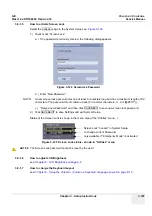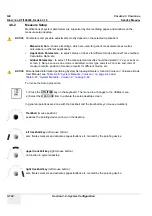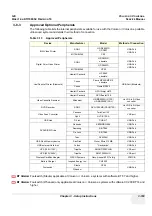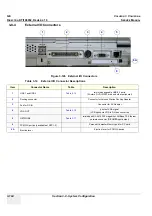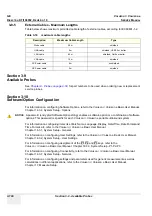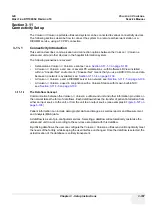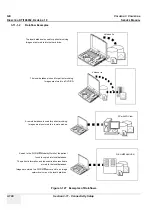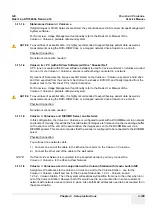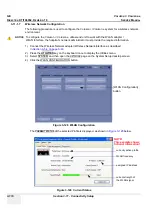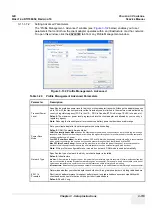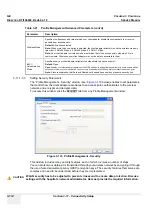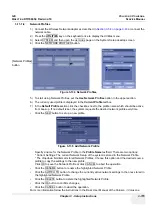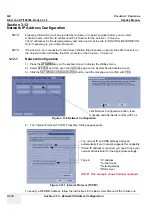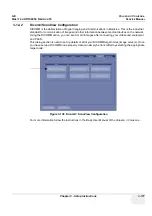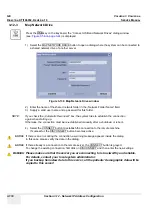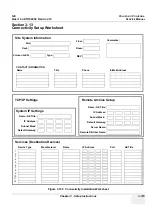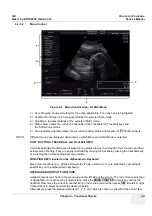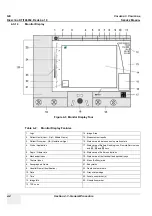
GE
V
OLUSON
i / V
OLUSON
e
D
IRECTION
KTI106052, R
EVISION
10
S
ERVICE
M
ANUAL
Chapter 3 - Setup Instructions
3-113
3-11-1-7-2
Setting Advanced Parameters
The “Profile Management - Advanced” window (see:
Figure 3-132
below) enables you to set
parameters that control how the client adapter operates within an infrastructure or ad hoc network.
To open this window, click the
ADVANCED
tab from any Profile Management window.
Figure 3-132 Profile Management - Advanced
Table 3-20 Profile Management Advanced Parameters
Parameter
Description
Transmit Power
Level
Specifies the preferred power level at which your client adapter transmits. Although the adapter supports
up to 100 mW, the transmit power level that is actually used is limited to the maximum value allowed by
country’s regulatory agency (FCC in the U.S., DOC in Canada, ETSI in Europe, TELEC in Japan, etc.).
Default:
The maximum power level programmed into the client adapter and allowed by your country’s
regulatory agency.
Note:
Reducing the transmit power level conserves battery power but decreases radio range.
Power Save
Mode
Sets your client adapter to its optimum power consumption setting.
Default:
CAM (Constantly Awake Mode)
CAM (Constantly Awake Mode):
Keeps the client adapter powered up continuously so there is little lag in message
response time. Consumes the most power but offers the highest throughput. Is recommended for desktop computers
and devices that use AC power.
Fast PSP (Power Save Mode):
Switches between PSP and CAM mode, depending on network traffic. Is recommended
when power consumption is a concern but you need greater throughput than that allowed by Max PSP
Max PSP (Max Power Saving):
Conserves the most power but offers the lowest throughput. Is recommended for
devices for which power consumption is the ultimate concern (such as small battery-powered devices).
Note:
If this profile is configured for use in an ad hoc network, CAM mode is used automatically.
Network Type
Specifies the type of network in which your client adapter is installed.
Default:
Infrastructure
Ad Hoc:
Often referred to as
peer to peer
. Indicates that your wireless network consists of a few wireless devices that
are not connected to a wired Ethernet network through an access point. For example, an ad hoc network could be set
up between computers in a conference room so that users can share information in a meeting.
Infrastructure:
Indicates that your wireless network is connected to a wired Ethernet network through an access point.
802.11b
Preamble
Determines whether your client adapter uses both short & long radio headers or only long radio headers.
Short radio headers improve throughput performance; long radio headers ensure compatibility with
clients and access points that do not support short radio headers.
Default:
Short & Long
Summary of Contents for H48651KR
Page 2: ......
Page 11: ...GE VOLUSON i VOLUSON e DIRECTION KTI106052 REVISION 10 SERVICE MANUAL ix ZH CN KO ...
Page 44: ...GE VOLUSON i VOLUSON e DIRECTION KTI106052 REVISION 10 SERVICE MANUAL xlii Table of Contents ...
Page 514: ...GE VOLUSON i VOLUSON e DIRECTION KTI106052 REVISION 10 SERVICE MANUAL IV Index ...
Page 515: ......



